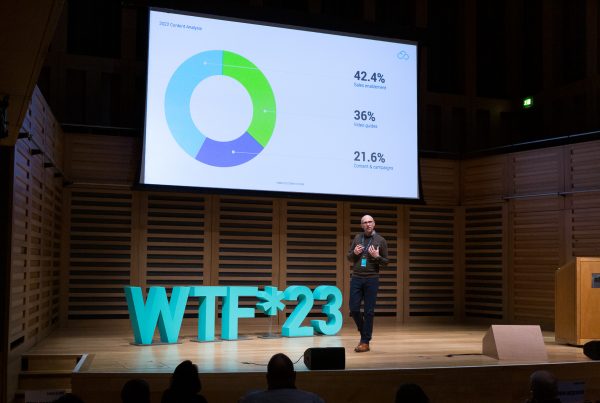AI technology is getting better and more reliable every day.
Last year, around 29.5% of the telecommunications sector adopted some form of AI, making telecoms vendors among the highest adopters of AI, by industry.
Among the many features available through AI, some of the most popular were data management and analysis, which saw a 9% uptake, and natural language processing, which boasted 8% growth.
These features are likely serving the 51.8% of contact centres with existing AI strategies, helping them contextualise dialogue and improving their performance.
So, let’s take a deeper dive into three core features being used by contact centres.
Data analytics
 Natural language processing (NLP) will focus on the interactions between computers and human dialect.
Natural language processing (NLP) will focus on the interactions between computers and human dialect.
This will convert speech or text into a computerised format, using processing algorithms to contextualise input, before converting this back to readable, carefully organised data, ready for operators to pinpoint key information they need – common techniques will be rule or statistic-based.
Collated in real-time, and accessible from one platform, business owners can closely scrutinise call durations, quality of conversation and even sentiment – whenever they want.
In fact, the very latter is most impressive, as this can identify the emotional tone being used by customers, which can offer accurate insight into their opinions about products or services.
Contact centre analytics will also be tracking call agents, giving you clear and present insights into their performance.
You’ll see first-hand if they’re providing effective and polite services, and it’s even possible to search for industry-specific phrases they should be using – making it easy to monitor, score, and ultimately improve performance.
Conversational chatbots
 Using natural language understanding (NLU), and natural language generation (NLG), chatbots can engage with customers through human-like conversations.
Using natural language understanding (NLU), and natural language generation (NLG), chatbots can engage with customers through human-like conversations.
The former will start tagging each word as either nouns, verbs or adjectives, helping to formulate coherent meaning around the dialogue provided.
Entity recognition then picks out any people or company names mentioned, which again, provides a broader context around what the customer is concerned with.
Relationship between words will also be scrutinised, and finally, sentiment analysis will determine the emotion being displayed throughout the text.
Once this has been established, the latter comes into play, which plans relevant content and its order of distribution based on the analysis.
This will include the structure of sentences, along with appropriate phrases that best match with the subject matter being discussed, and the tone being conveyed by the customer.
Humans, or the system itself, can make final checks and necessary amendments, since certain text may have grammatical errors, or simply isn’t using the right tone of voice.
Intelligent routing
 AI powered intelligent routing will help direct customers to the right department based on who they are, along with the nature of their call, and who would be most appropriate to help them.
AI powered intelligent routing will help direct customers to the right department based on who they are, along with the nature of their call, and who would be most appropriate to help them.
It’s a thorough decision-making process, which may draw upon multiple sources, in which call transcripts and instant messages taken from previous interactions, are used to better inform any decisions made.
Adopting similar language processing used for chatbots, this can determine the structure of customer dialogue, and its sentiment, which could be deemed urgent, should the tone and phrases being used portray this.
Before intelligent routing, customers would be given automatic options, such as “press one to speak with someone from sales”, whereas AI can strike a conversational relationship from the off, which often demonstrates a greater level of care and trust.
According to Salesforce, 83% of customers expect to engage with someone right away, which sometimes, can be tricky for contact centres to guarantee, which is why, intelligent routing, and its understanding of human dialect, is used to speed this process up.




